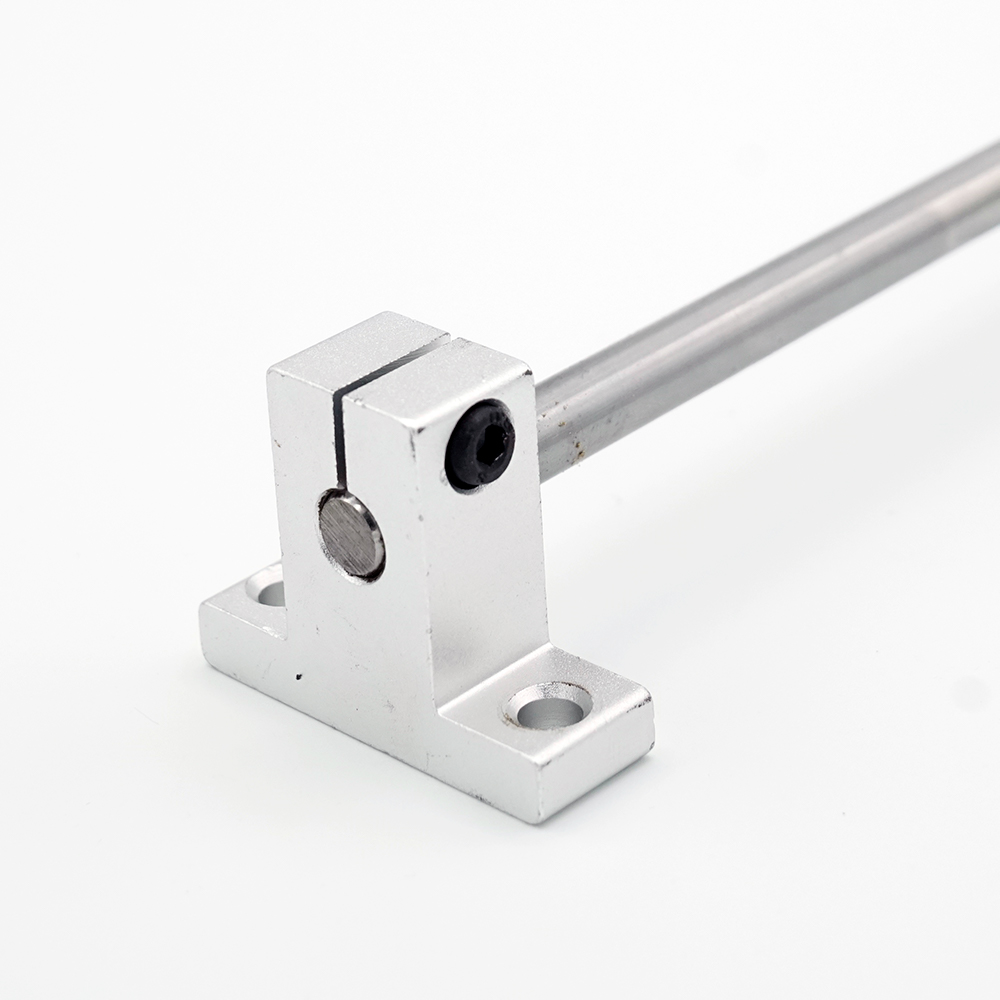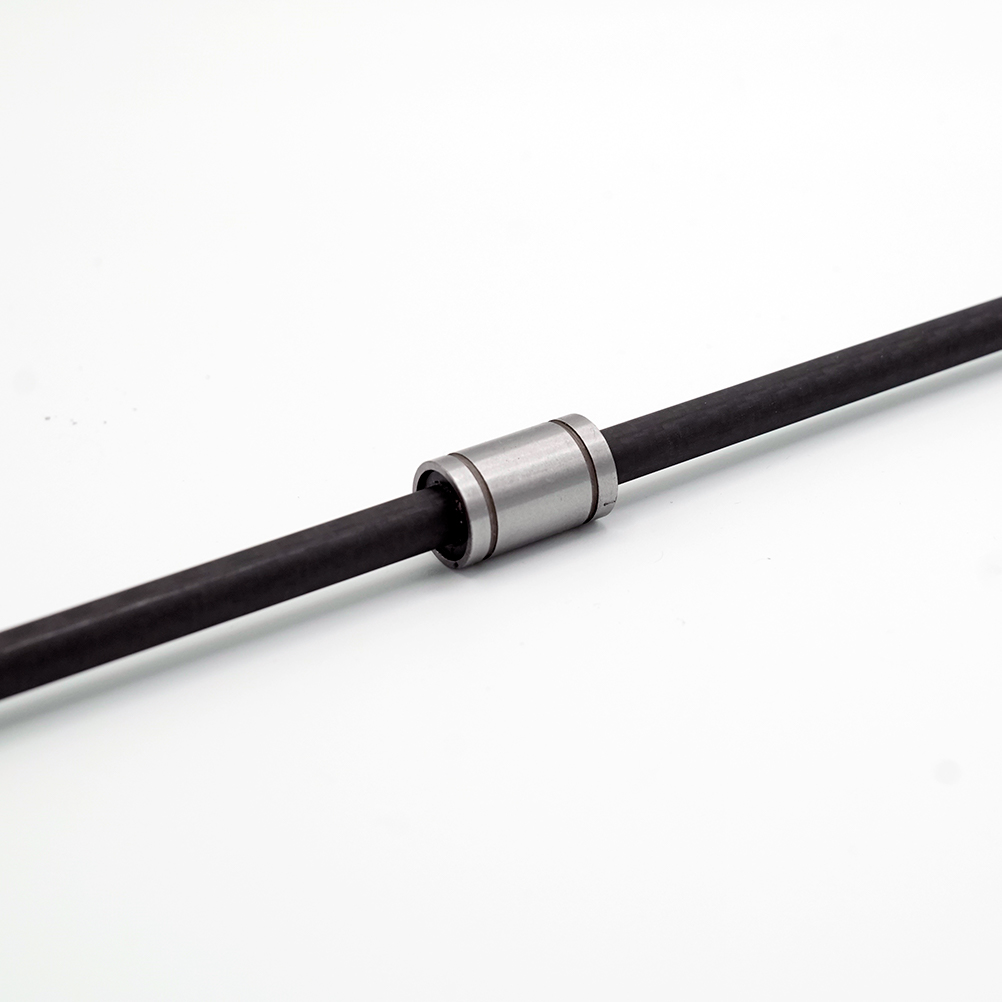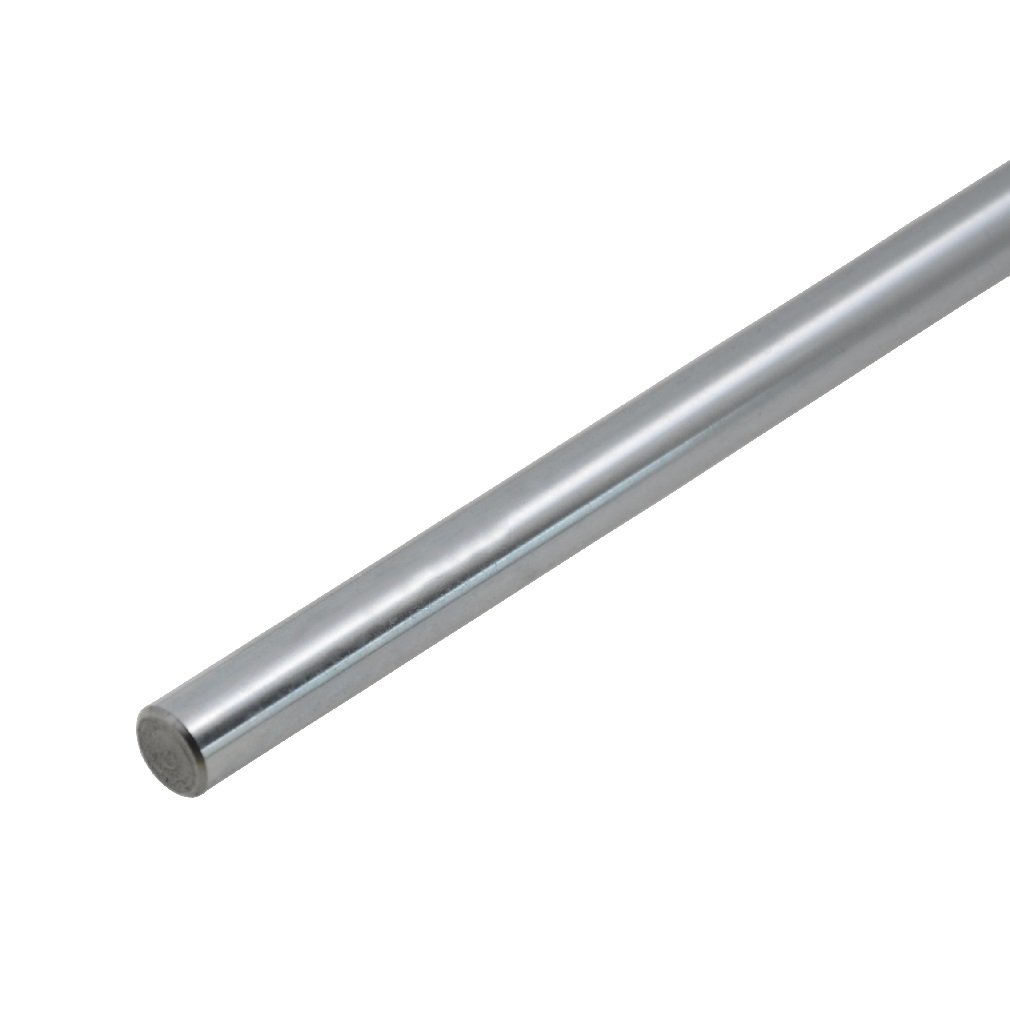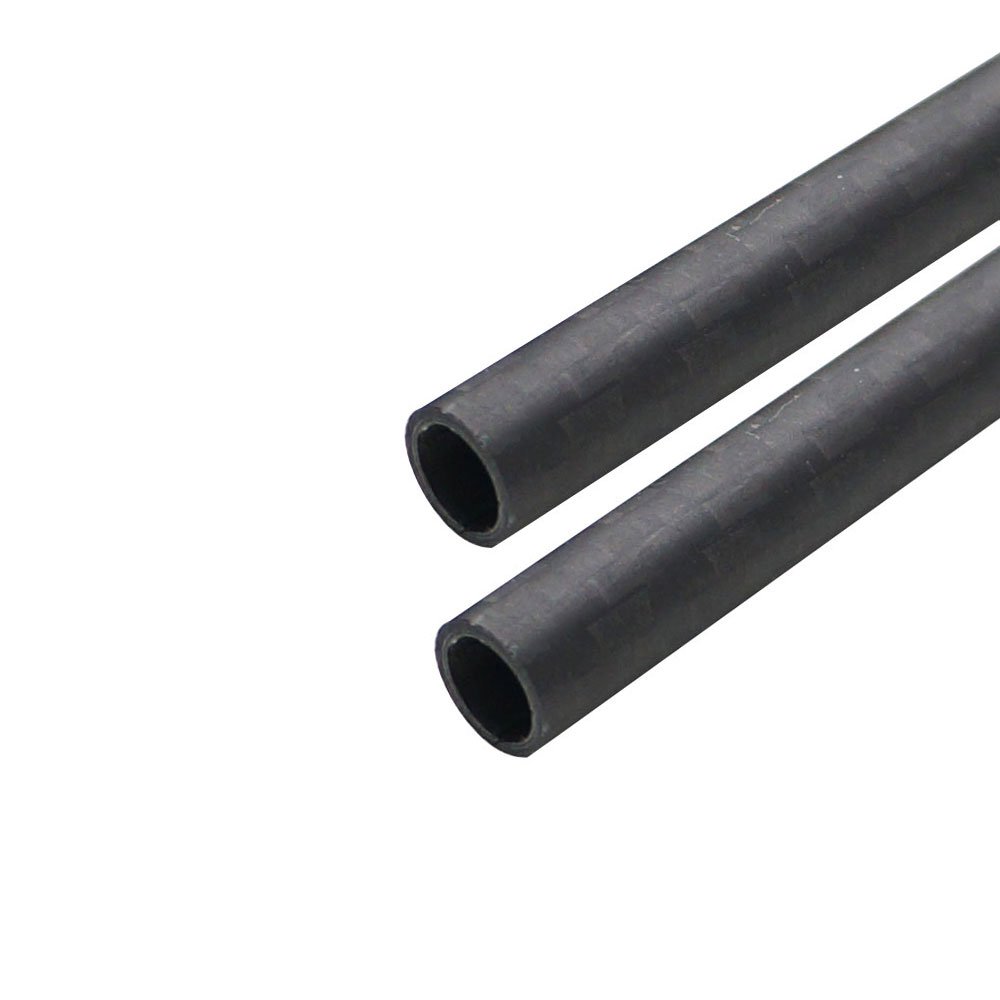Overview
The alternative to using rails for linear motion is linear rods. Linear rod comes in a variety of different lengths and diameters, but typically rod with a diameter of 8mm is used in 3D printer builds. Commonly made from steel and chrome plated for enhanced hardness, linear rod is less expensive to manufacture. The simplicity of rod translates to less tolerance issues compared to linear rails, especially when purchasing cheap imported linear motion systems. Linear ball bearings (also known as ball bushings) ride on the linear rod to provide the actual motion. These bushings are also widely available and cost significantly less than the carriages that ride on linear rails.

Linear Rail vs. Rod
A couple of years ago it seemed like every 3D printer relied on rods for linear motion. But today, the trend is to use linear rails for new printer builds. While linear rails provide modest improvements to print quality, which depending on who you ask is or is not worth the extra money, the reason most DIYers are flocking to linear rails is the ability to create simpler and lighter printers. Linear rods create a bulkier assembly because the rods require thick clamps to be attached to the frame and more importantly, two rods must be used per axis to restrict the motion to one degree of freedom. The linear bearings can move forward, backwards, and spin around its axis of travel. If you attached an extruder to only one linear bearing, then the extruder could spin around the rod, which is unacceptable. This can be fixed by attaching the extruder to a bearing on a second parallel rod, but clearly, this is a bulkier solution compared to the single guide requirement for linear rails.

A New Linear Rod Material
Interestingly, carbon fiber has emerged as a new material for linear rods. Weight for weight, carbon fiber is stiffer then both aluminum and steel. Therefore, hollow carbon fiber rods are extremely light while still being sufficiently stiff for linear motion. Carbon fibers are new to the market and the ones with acceptable tolerances for 3D printers cost a pretty penny. Cheap carbon fiber rods that can be found on amazon have an inconsistent outer diameter along the length of the rod, requiring sanding to achieve smooth motion of the bearing. Please note: carbon fiber dust generated from cutting or sanding is easily inhaled and very toxic.
External Resources
There are a lot of different ways to successfully build a 3D printer, many of which are not covered on this website. If you want to learn more about Linear Rods, then click through some of the links below to external websites and forums.
Recommended Products
The table below contains parts specific to this section that Dr. D-Flo uses and recommends. Depending on your printer build these parts may or may not be compatible. It is best to use the products below as a launching point to explore similar products on the linked websites. Affiliate links may be present below (depending on the vendor).


